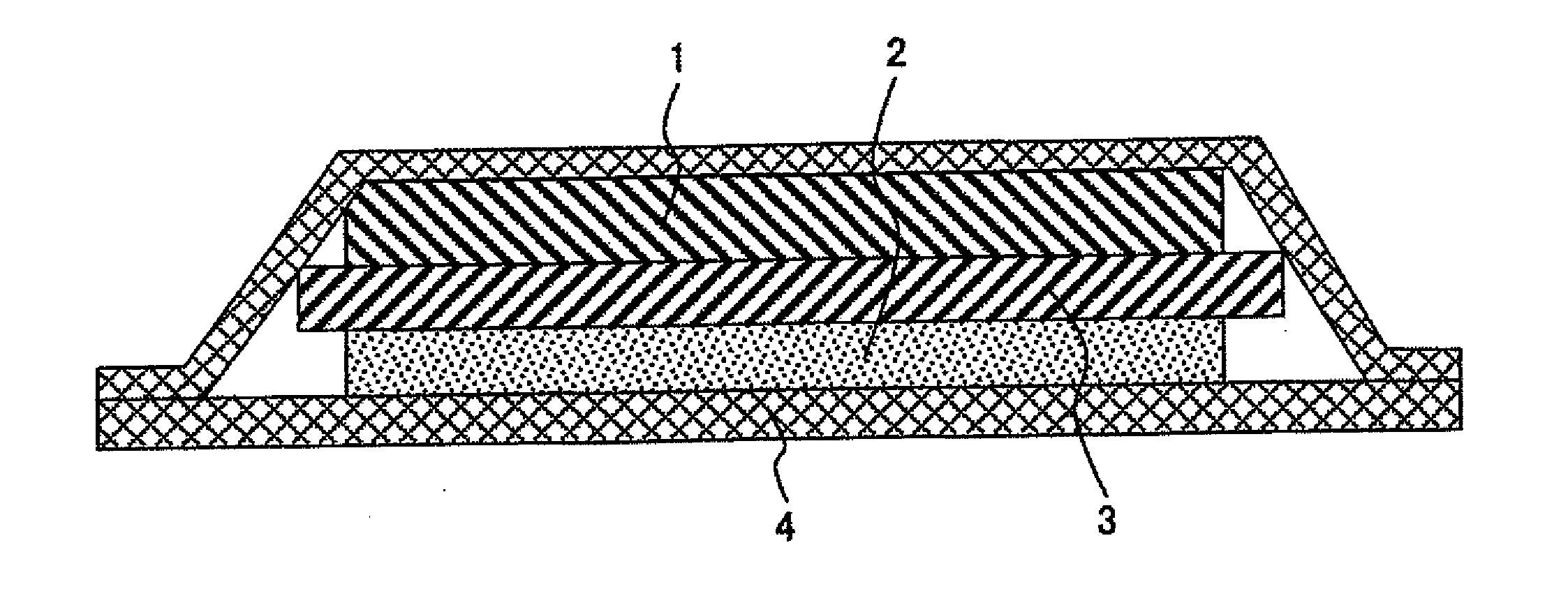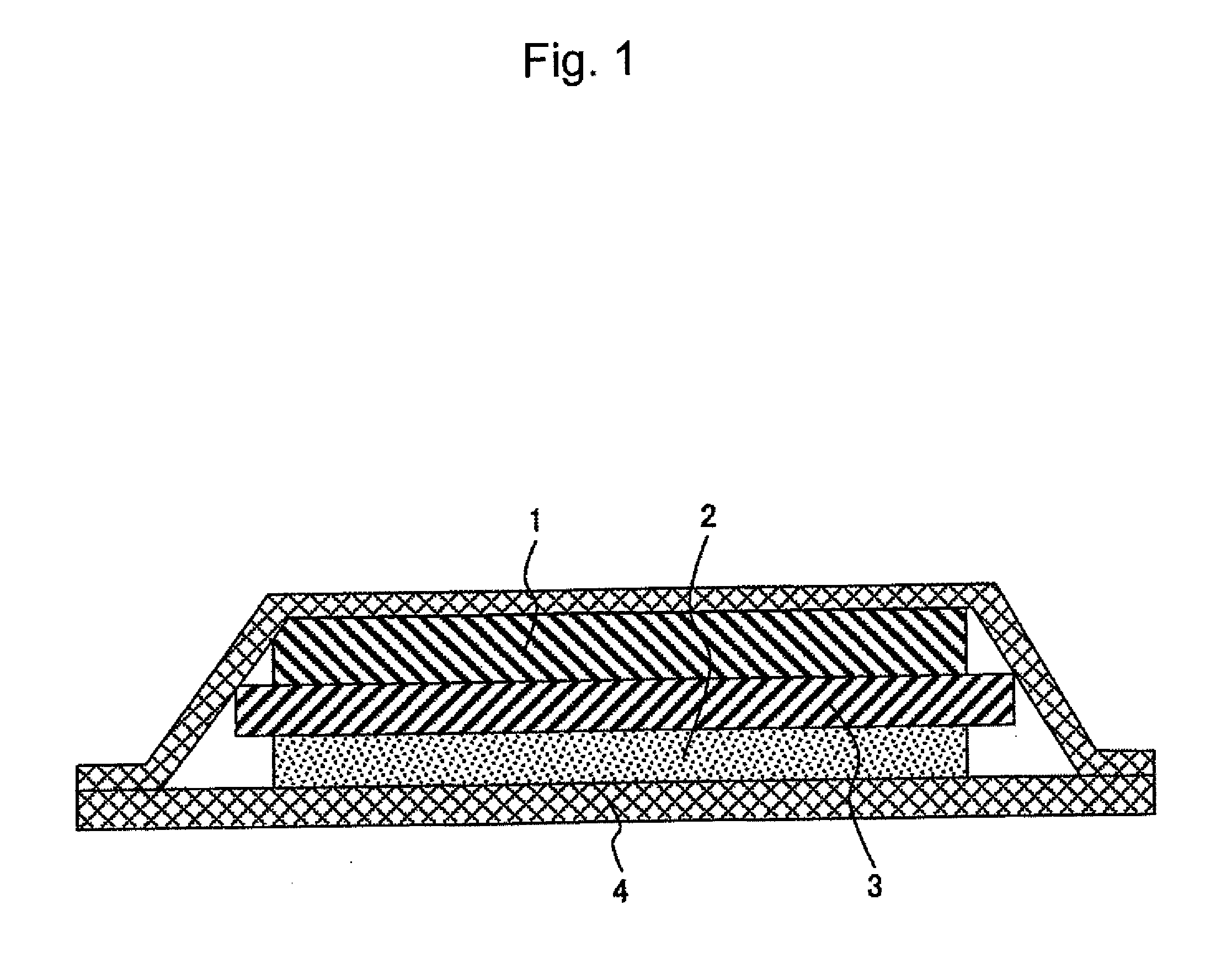Ionic conductive side-chain-type polymer electrolyte, precursor thereof, and lithium secondary battery
a polymer electrolyte and side-chain-type technology, applied in non-aqueous electrolyte cells, sustainable manufacturing/processing, non-metal conductors, etc., can solve the problems of simultaneously and disadvantageously lowering ionic conductivity, and achieve excellent temperature dependence of ionic conductivity, reduce activation energy generated, and enhance organic group mobility
- Summary
- Abstract
- Description
- Claims
- Application Information
AI Technical Summary
Benefits of technology
Problems solved by technology
Method used
Image
Examples
example 1
[0037]A method 1 for synthesizing a cationic conductor represented by formula (8) is described. Allyl methyl carbonate (50 g) is dissolved in 0.5 dm3 of tetrahydrofuran, 0.25 g of AIBN is added thereto, and the mixture is stirred at 70° C. to obtain a polymer. The resulting polymer (1 g) and 1 g of LiN(CF3CF2SO2)2 are dissolved in 20 ml of N-methylpyrrolidone, the resulting solution is cast on a poly(tetrafluoroethylene) sheet, the sheet is subjected to vacuum drying at 80° C., and a cast film having a thickness of 100 μm is prepared.
[0038]This cast film is inserted between stainless (SUS 304) electrodes with diameters of 15 mm to prepare a test cell. An amplitude voltage of 10 mV is applied to this cell at room temperature to measure a.c. impedance. The frequency range is between 1 Hz and 1 MHz. Based on the reciprocal of the bulk ohmic value obtained by the measurement of a.c. impedance, ionic conductivity is determined. Ionic conductivity is deduced to be approximately 5×10−5 Scm...
example 2
[0039]A.c. impedance was measured in order to examine the temperature dependence of the ionic conductivity using the test cell prepared in Example 1. The test cell was allowed to stand in a thermostat maintained at the given temperature level for 30 minutes, and the measurement was carried out in a manner such that the cell was set in the thermostat. Ionic conductivity was determined in the same manner as in Comparative Example 1. The activation energy of the ionic conduction, which was calculated based on the correlation between ionic conductivity and temperature, was deduced to be 5 kJ / mol, which is smaller than that obtained in Comparative Example 2 below. A polymer electrolyte having excellent temperature dependence can be thus obtained.
example 3
[0040]FIG. 1 shows a cross section of a lithium battery using a cationic conductive polymer electrolyte according to an embodiment of the present invention.
[0041]A lithium ionic conductive polymer electrolyte of the present example is a complex of a polymer and a lithium salt. Such electrolyte can be obtained by dissolving a monomer having an organic group that affects ionic conduction and a lithium salt in an organic solvent, subjecting the resulting solution to polymerization, and then removing an organic solvent. Alternatively, a polymer having an organic group that affects ionic conduction is dissolved in an organic solvent, and an organic solvent is then removed therefrom. Thus, a lithium ionic conductive polymer electrolyte can also be obtained.
[0042]A polymer electrolyte is prepared in the form of a sheet when it is used as an electrolyte for a lithium battery and is made to function as a separator between positive and negative electrodes. Such sheet-like polymer electrolyte ...
PUM
| Property | Measurement | Unit |
|---|---|---|
| thickness | aaaaa | aaaaa |
| diameters | aaaaa | aaaaa |
| amplitude voltage | aaaaa | aaaaa |
Abstract
Description
Claims
Application Information
 Login to View More
Login to View More - R&D
- Intellectual Property
- Life Sciences
- Materials
- Tech Scout
- Unparalleled Data Quality
- Higher Quality Content
- 60% Fewer Hallucinations
Browse by: Latest US Patents, China's latest patents, Technical Efficacy Thesaurus, Application Domain, Technology Topic, Popular Technical Reports.
© 2025 PatSnap. All rights reserved.Legal|Privacy policy|Modern Slavery Act Transparency Statement|Sitemap|About US| Contact US: help@patsnap.com



